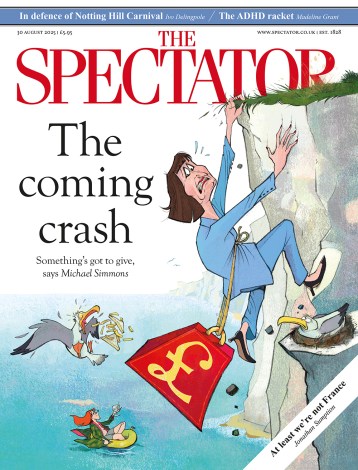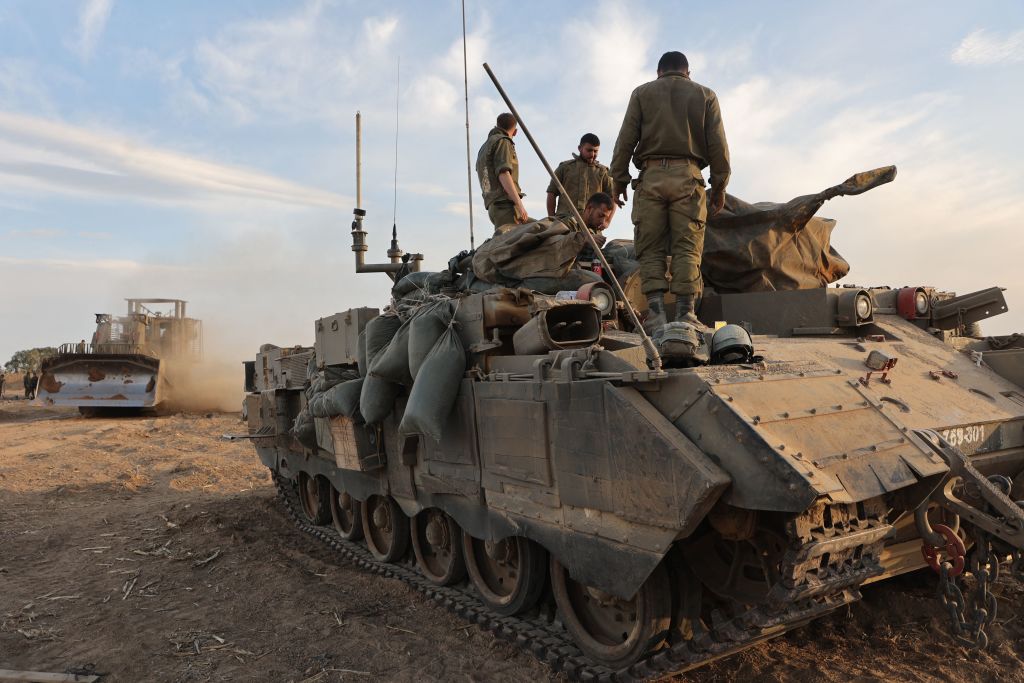Israeli soldiers are the masters of street fighting. It is unlikely that there has been a single month in the 75-year history of the Israeli state in which members of its security forces have not been involved in some form of urban warfare.
The Israeli Defence Force (IDF) have fought on the streets of Gaza and the West Bank during the first and second intifadas, as well as in towns and villages in southern Lebanon. They have developed tactics, now adopted by armies the world over, for moving through occupied urban areas by blasting holes through buildings. And through endless urban battles – known as FIBUA, fighting in a built-up area – the IDF have become experts in maximising enemy casualties while minimising their own.
The fighting is likely to be ferocious as Israeli infantry root out Hamas gunmen from the smouldering remains of Gaza city
This weekend, Prime Minister Benjamin Netanyahu said the operation against Hamas had now entered its ‘second stage’, adding that ‘the war in the Strip will be long and difficult and we are prepared for it.’ The early signs suggest that the IDF is taking Gaza piece by piece – a military concept known as clear and hold. Huge numbers of troops will be required and the fighting is likely to be ferocious and possibly hand-to-hand, as Israeli infantry root out Hamas gunmen from the smouldering remains of Gaza city.
Following the Hamas atrocities of October 7th, thousands of IDF personnel have been testing their tactics relentlessly in the street fighting training base known as Little Gaza at the Tze’elim training centre in the southern Negev desert. The £40 million base is designed to simulate a modern desert city, with more than 600 individual structures, including eight story high buildings, complexes, shacks, schools, stores and markets.
Israeli troops – many of them reservists who just a little more than three weeks ago were sitting behind desks in office blocks in Tel Aviv or tending their avocado farms –will have been trained in how to quickly identify ambush points, sniper locations and where home-made bombs are likely to be placed. Soldiers will also have received hours of refresher training in how to deal with a traumatic amputation, stop an arterial bleed and when and when not to administer morphine to a seriously wounded fellow soldier screaming in agony.
That knowledge, collated over decades, will now be invaluable as their troops begin to move through the bomb-cratered streets of Gaza in the hunt for Hamas terrorists and the search for the estimated 200 hostages snatched from southern Israel three weeks ago.
Israeli Intelligence planners will have pored over hours of satellite imagery and video footage from drones pinpointing likely Hamas strongholds and headquarters. Mossad spies placed inside the Gaza Strip will have been sending back covert messages on the terrorists’ battle preparations, dispositions and weaponry.
Additionally, Hamas fighters, like everyone else in Gaza, have been subjected to almost three weeks of relentless bombing, along with chronic food, water and electricity shortages designed to degrade the terrorists’ will to fight.
So it would be easy to assume that what resistance there might be inside Gaza would be weak and short-lived. But plans in war often do not go to plan. The 19th century military strategist Carl Von Clausewitz is often quoted as saying no plan survives contact with the enemy and history has proven time and again that he was correct.
Back in 2006 when British troops arrived in southern Afghanistan, Brigadier Ed Butler, a highly experienced SAS officer, once said that the ‘enemy always gets a vote’. What Butler, who was in charge of British forces in Helmand, meant was that the outcome of any combat plan, no matter how brilliant, is always dependent on how the enemy responds. And in the forthcoming battle for control of the Gaza Strip, all the indicators suggest that Hamas’s response will be to fight.
History has repeatedly shown that war is the most difficult and complex of all human endeavours and the most complex battles are those fought in the urban theatre. Military commanders avoid large-scale battles in cities at all costs. Look what happened to the Germans at Stalingrad – arguably the single most important battle of the entire second world war. Had Hitler ordered his generals to avoid the Russian city the entire outcome of the war may have been very different. In the battle for Berlin, which lasted a little more than two weeks, almost 200,000 Russians and German soldiers died fighting for every room in every house in every street. The very nature of urban warfare plays into the hands of the defender rather than the attacker. Trying to locate a sniper, for example, with the sound of rifle fire echoing off buildings is often impossible, as British soldiers patrolling the bleak streets of Belfast and Londonderry often found during The Troubles.
Throw into this bloody mix the unimaginable horror that is tunnel fighting and it is easy to see how Hamas’s vote might derail even the best laid Israeli battle plan. Tragically, Israel may have to endure many more months of loss and trauma before Benjamin Netanyahu can declare ‘mission accomplished’. And then what? How is victory defined – when every Hamas fighter is killed or captured? When all of the hostages have been released? Crucially the question also facing Israel is what happens if Plan A fails.






Comments